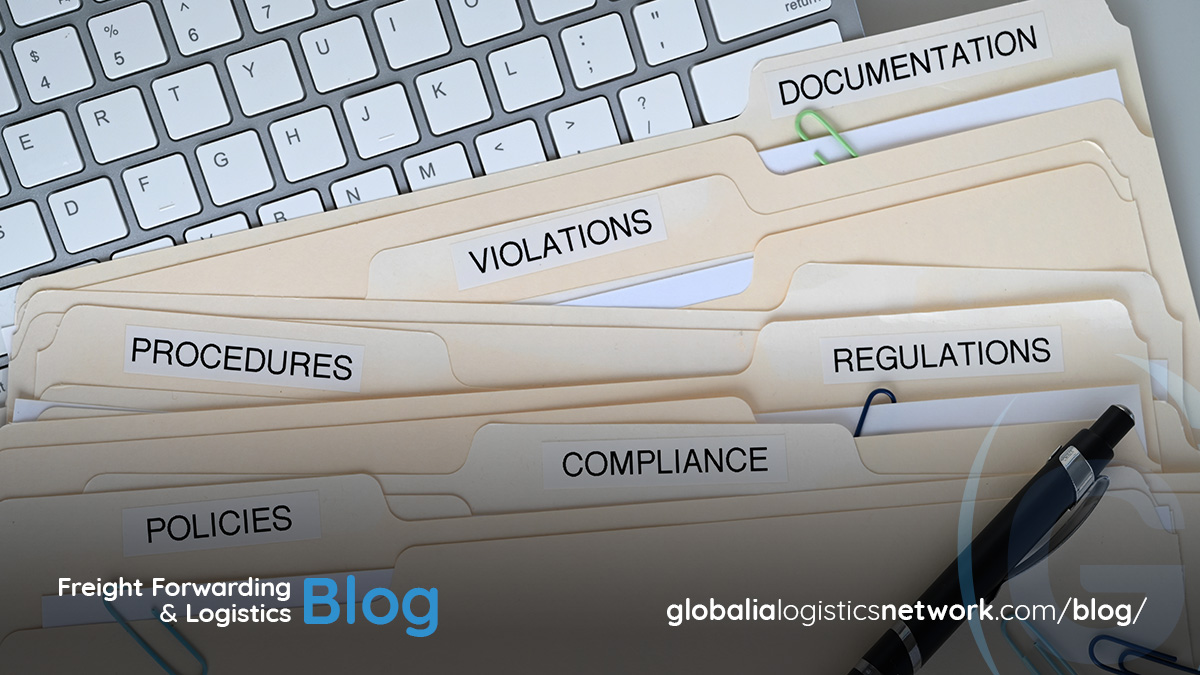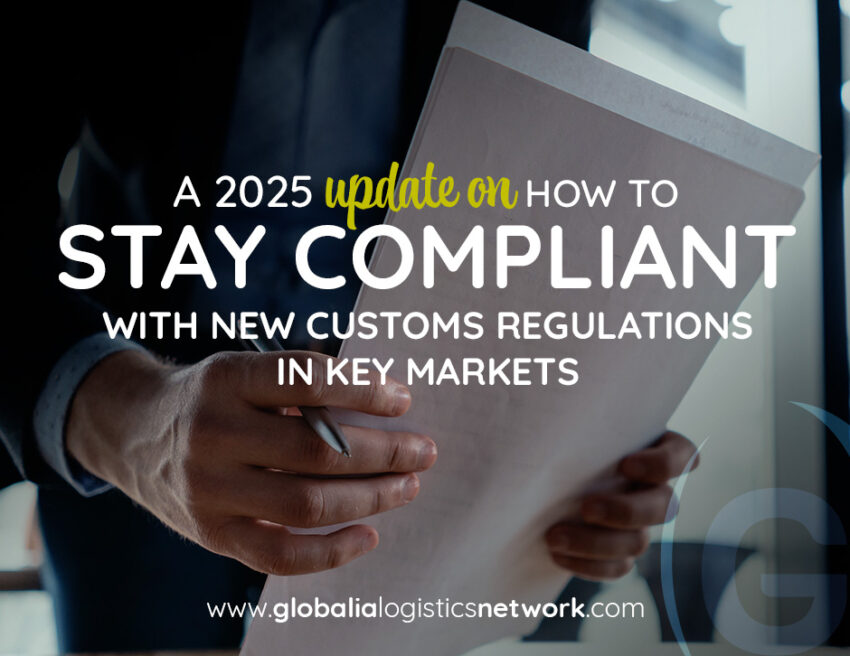Have you ever wondered what a single new customs rule could mean for your entire logistics operation? Or how a seemingly minor regulatory update in one country could suddenly delay your shipments, add unexpected costs, or even result in hefty penalties? If you’re a freight forwarder working in today’s interconnected world, these aren’t hypothetical scenarios — they’re daily realities. That’s why staying informed about customs compliance updates 2025 is crucial to keeping your operations smooth, cost-effective, and penalty-free.

In 2025, global trade has become more complicated than ever. According to a recent report by the World Trade Organization (WTO), worldwide merchandise trade volumes are projected to grow by 2.6% this year — a modest but promising rise after several turbulent years of pandemic-related disruptions, supply chain bottlenecks, inflation, and geopolitical tensions. Yet with that recovery comes an increasingly complex customs landscape, driven by heightened security concerns, climate policy regulations, and retaliatory trade actions among economic powerhouses.
For freight forwarders, keeping pace with these changes isn’t just about avoiding costly delays or penalties. It’s about maintaining trust with clients, safeguarding business margins, and securing long-term competitiveness. A 2024 survey conducted by the International Federation of Freight Forwarders Associations (FIATA) found that over 68% of forwarders experienced customs-related disruptions in at least one major market within the past 18 months. Most cited changes in documentation requirements, new pre-arrival security filings, and modifications to tariff schedules as their top compliance challenges.
This makes one thing clear: a proactive, well-informed approach to customs compliance is no longer a choice for freight forwarders — it’s a business-critical strategy.
In this 2025 update, we’ll break down the most significant customs compliance updates 2025 affecting freight forwarders in key markets: the European Union, United States, China, and Southeast Asia. We’ll explain what these updates mean for your operations and share essential tips to help you stay compliant in a fast-evolving global trade environment.
European Union: Implementation of ICS2 Release 3
The European Union’s Import Control System 2 (ICS2) has been one of the most significant customs security projects in recent years. As of April 1, 2025, its third release officially expanded the system’s coverage to include not just air cargo — which was already under ICS2 since 2023 — but now also rail, road, and maritime shipments.
This means that all freight forwarders handling goods destined for or transiting through the EU must file comprehensive Entry Summary Declarations (ENS) electronically before goods arrive at the EU border, regardless of the transport mode. The move is designed to strengthen supply chain security, allow for better risk analysis by EU customs, and facilitate smoother clearance for compliant shippers.
The transition hasn’t been entirely seamless. Many freight forwarders are still adjusting to the enhanced data requirements. Shippers must now provide more granular shipment details, including accurate commodity descriptions, HS codes, and consignee information well before departure.
To remain compliant, freight forwarders should integrate their operations with the ICS2 system through approved customs software providers or service portals. Regular staff training on data accuracy and regulatory updates is also crucial as non-compliance can result in cargo being held at the border, leading to delays and financial penalties.
United States: Tariff adjustments and De Minimis changes
The United States continues to adjust its customs and trade policies as part of its efforts to protect domestic industries and control the flow of imports. In 2025, two significant changes have reshaped the landscape for freight forwarders managing shipments into the U.S.
Firstly, from April 10, 2025, the U.S. Customs and Border Protection (CBP) introduced a new universal 10% duty rate on imports from a list of countries previously subject to country-specific tariffs. This streamlines tariff application but affects cost structures for businesses importing from nations like India, Vietnam, and certain South American markets.
Secondly, effective May 2, 2025, the U.S. revoked the de minimis exemption for shipments valued under $800 originating from China and Hong Kong. Previously, these low-value shipments enjoyed duty-free and streamlined clearance. Now, each requires a formal customs entry, complete with applicable duties and fees.
Freight forwarders handling e-commerce shipments into the U.S. must now revamp their clearance processes. Accurate classification, proper valuation, and timely filing have become vital to avoid shipment delays at busy U.S. ports of entry. Forwarders should also regularly monitor CBP trade bulletins and updates to stay on top of any further tariff modifications likely in the second half of 2025.
China: Increased tariffs on U.S. goods
China’s trade environment has become more defensive in 2025 as it counters tariff increases and trade restrictions from the United States and other trading partners. On April 11, 2025, Beijing announced a new round of retaliatory tariffs on various U.S.-origin goods, affecting commodities ranging from agricultural products to automotive parts.
For freight forwarders managing imports into China, this move has increased customs complexity. Shipments from the U.S. are now subject to higher duties and require more extensive declarations, often leading to lengthier inspections.
It’s critical for forwarders to stay informed about the latest Chinese tariff schedules and use reliable customs brokers on the ground to navigate the heightened regulatory scrutiny. In some cases, companies are redirecting their sourcing or routing strategies to mitigate the financial impact of these tariffs. Consulting with trade specialists and exploring alternative supplier markets in Southeast Asia or the Middle East is becoming a practical risk mitigation tactic.
Customs compliance updates 2025 in Southeast Asia
Southeast Asia has emerged as a critical player in the global logistics landscape, particularly as supply chains pivot away from China due to rising costs and trade tensions. Vietnam, Thailand, Malaysia, and Indonesia have seen rapid growth in export volumes to the U.S. and Europe.
However, each Southeast Asian nation maintains its own customs regulations, making compliance a nuanced task for international freight forwarders. In 2025, Vietnam introduced stricter requirements for cargo manifest submissions, requiring electronic data filing at least 24 hours before arrival at major seaports. Thailand revised its import tax classifications for machinery and electronics, while Indonesia increased penalties for incomplete or inaccurate customs documentation.
Freight forwarders expanding their Southeast Asian operations need to develop localized expertise, maintain up-to-date knowledge of each country’s customs framework, and leverage regional trade agreements such as the RCEP (Regional Comprehensive Economic Partnership) to optimize costs and compliance efficiency.
Conclusion: Why proactive compliance is a competitive advantage in 2025
The customs compliance updates 2025 presents both challenges and opportunities for freight forwarders. While regulatory changes often introduce additional costs and procedural hurdles, forwarders that approach compliance proactively can turn it into a competitive advantage.
Staying compliant means avoiding penalties and delays, but it also means building stronger, more reliable partnerships with clients who value operational transparency and efficiency. It helps freight forwarders maintain seamless supply chain flows, ensure faster market access, and improve overall service levels.
To achieve this, forwarders must invest in staff training, upgrade digital systems for customs integration, and work closely with experienced customs brokers and trade compliance consultants in each key market. Regularly monitoring official customs bulletins and trade advisories is no longer optional — it’s essential for long-term sustainability.
As global trade continues to evolve, the most successful freight forwarders in 2025 will be those who can adapt quickly, stay informed, and manage regulatory complexities with precision and agility.


